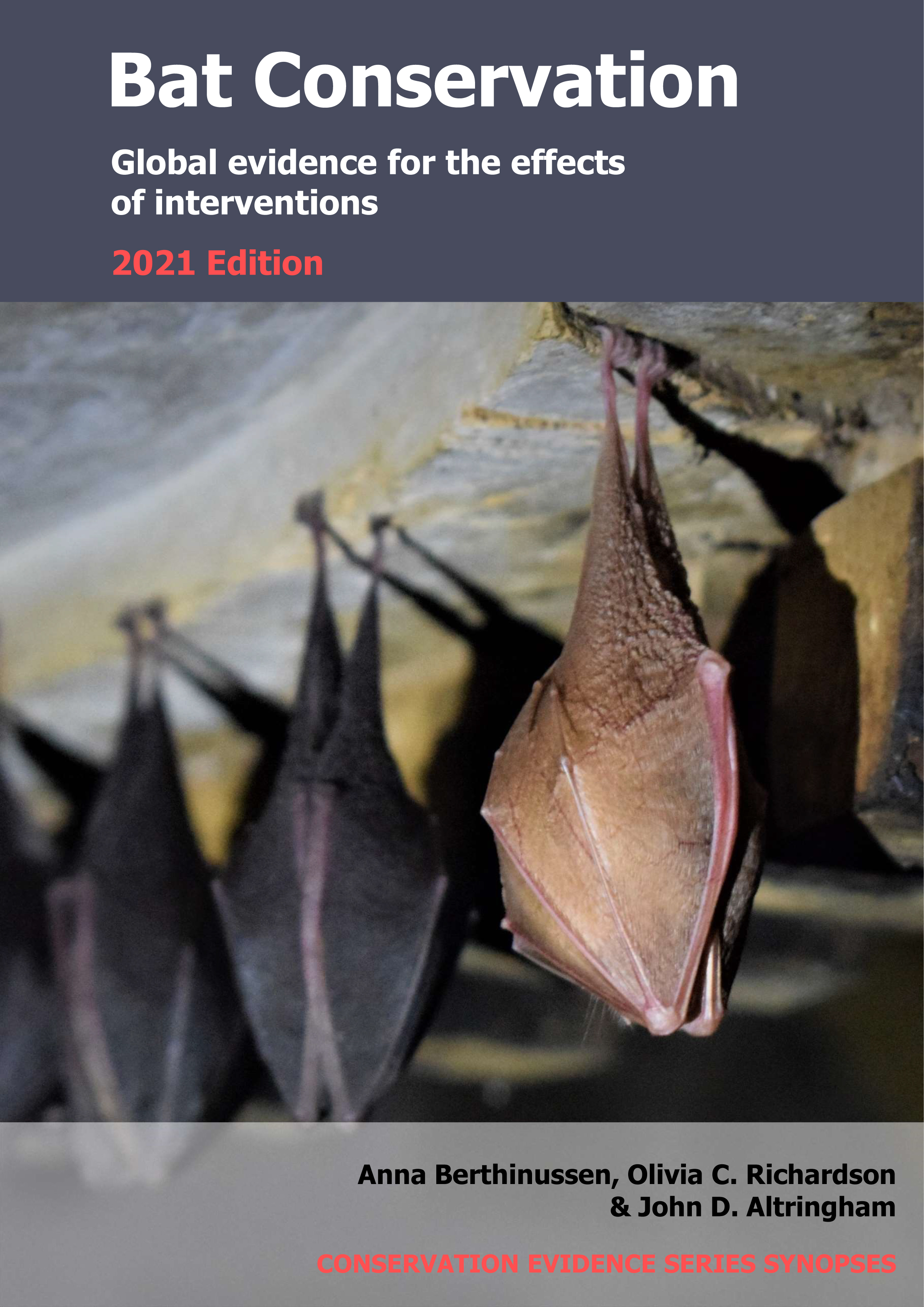Install fencing around cave entrances to restrict public access
-
Overall effectiveness category Unknown effectiveness (limited evidence)
-
Number of studies: 2
View assessment score
Hide assessment score
How is the evidence assessed?
-
Effectiveness
40% -
Certainty
20% -
Harms
0%
Study locations
Supporting evidence from individual studies
A controlled, before-and-after study in 1994–1996 at one cave on a forested limestone ridge in north Florida, USA (Ludlow et al 2000) found that replacing a steel bar gate with a fence resulted in more southeastern myotis bats Myotis austroriparius and gray myotis bats Myotis grisescens emerging from the cave entrance. More bats emerged from the cave entrance when a fence was installed (average 1,517 bats/month, 48% of total bats emerging) instead of a steel bar gate (306 bats/month, 8%). The number of bats emerging from a second ungated open entrance to the cave decreased after the gate was replaced with a fence (from 3,609 to 1,651 bats/month). The cave gate consisted of steel bars 13 mm in diameter spaced 100 mm apart in one direction and 465 mm in the other. Before removal of the gate a 2.2 m high chain-link fence was erected 6–8 m from the cave entrance. Emerging bats were counted monthly at the gated entrance and the open entrance for one year before and one year after the cave gate was removed and replaced with a fence (August 1994 to July 1996).
Study and other actions testedA replicated, site comparison study in 1997–2014 of 34 caves in eastern Spain (Machado et al 2017) found that installing fencing or cave gates did not have a significant effect on the occupancy or population growth rates of nine bat species. Average occupancy rates were similar in caves with (11 of 20, 57% of caves occupied) and without (8 of 14, 60% of caves occupied) gates or fencing (separate results for cave gates and fencing not reported). Population growth rates also did not differ significantly between caves with or without fencing or gates (data reported as statistical model results). Fourteen caves had fencing installed (2.5 m high gridded metal fences in a 20 m radius around the cave entrance), two caves had rigid panels installed (filling three-quarters of the cave entrance), two caves had iron bars installed (filling the entire cave entrance), and two caves had cave gates installed (with 2 x 1 m2 openings for bats). Fourteen caves did not have fencing or gates installed. Bats were counted annually using infrared video cameras and bat detectors at cave entrances between May and July in 1997–2014.
Study and other actions tested
Where has this evidence come from?
List of journals searched by synopsis
All the journals searched for all synopses
This Action forms part of the Action Synopsis:
Bat Conservation
Bat Conservation - Published 2021
Update 2020





)_2023.JPG)














